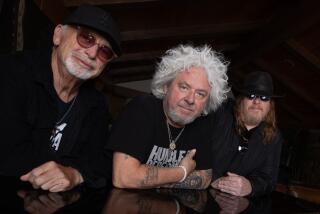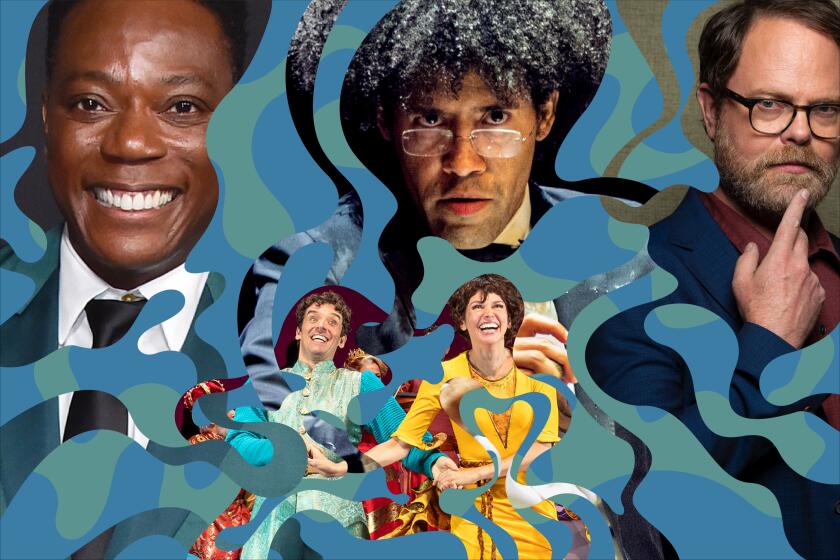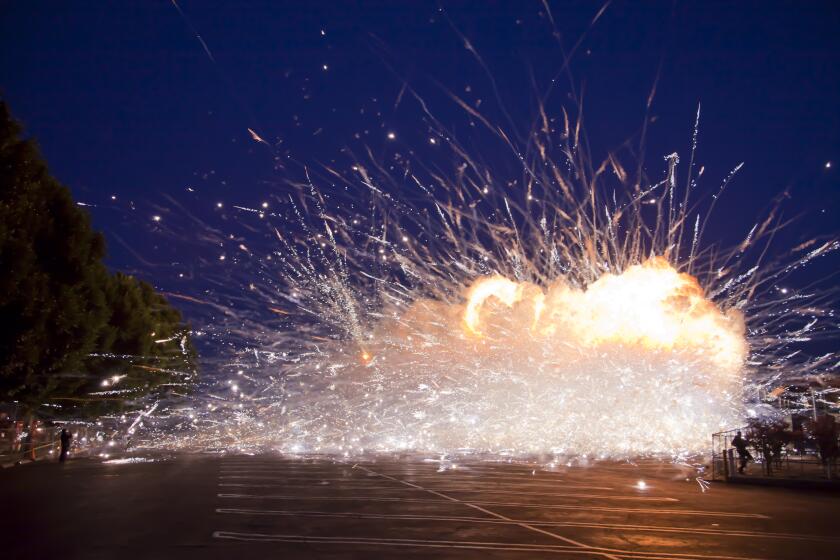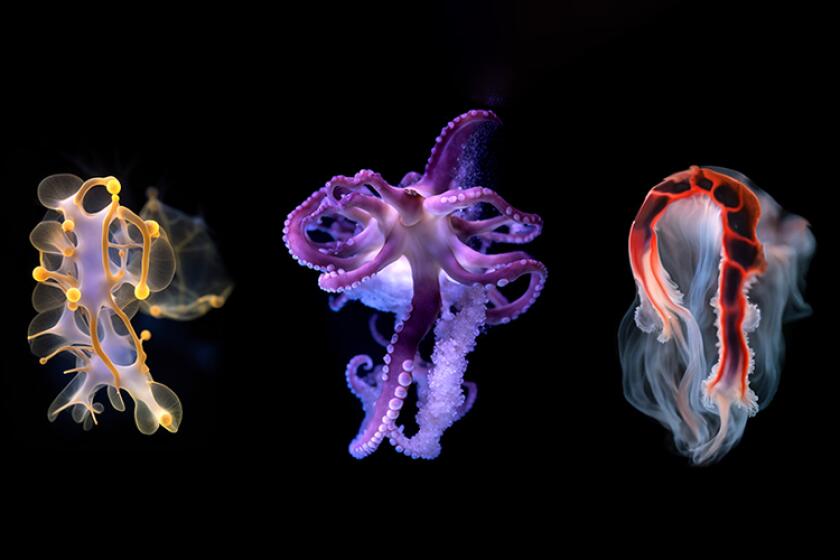ART REVIEW : Installation Asks More, Gives Less : Participation: Mowry Baden’s installation in La Jolla calls for spectator participation but offers little in return.
Between what we see and what we know lies a marvelously fluid realm, an ambiguous territory of shifting alliances, where sensory perception and intellectual knowledge rival and rouse each other. Artists since ancient Egypt have mined this fertile terrain, attempting either to bridge the perceptual gap or to explore its deep, phenomenological secrets.
Mowry Baden, a Southern Californian turned Canadian, has made what he calls the “quarreling of his perceptual mechanisms” the singular focus of his art. One of Baden’s participatory installations can now be seen at the San Diego Museum of Contemporary Art, along with a set of photographs documenting other works the artist has made since the mid-1960s.
“I Walk the Line,” the centerpiece of this show, invites a tense confrontation that it never really delivers. The title alone connotes an anxious, or perhaps proud, testing of mettle, an assertion of courage. But Baden’s work is actually far more benign than either his title or his theorizing would suggest.
Visitors to the installation may quite
literally “walk the line” that Baden has constructed, but major revelations are unlikely to result. Two 20-foot-long yellow platforms slope upward toward a common apex but do not meet. Between them runs a black-carpeted narrow channel or aisle. A smooth oak bar extends through the aisle, and Baden intends for viewers to pass through the space by straddling this bar.
Simple enough, but for the hump in the bar about halfway through. From the outside, the hump seems impossible to navigate, considering the bar starts at about thigh height. But--and here is the secret that a nearby wall text all too readily gives away--Baden has raised the floor beneath the hump, so the journey is far easier than it appears. Eyes cannot be trusted, Baden proclaims as Principle No. 1. Art (and life, presumably) must be experienced with the entire body to be fully comprehended.
When Baden conceived of this work in 1967 (it was last installed in 1970, and now belongs to the museum) he may have snubbed the Frank Stellas of the time, with their what-you-see-is-what-you-get-out-of-art mentality. But, in a way, Baden’s work also fits right in to the minimalist aesthetic, and its demand that the viewer use his or her own expectations and experience to “complete” a work of art.
The early performances of Bruce Nauman and Vito Acconci shared some common ground with Baden’s work, too, in their insistence on the viewer’s physical engagement. However, although Nauman’s and Acconci’s works fed fantasies and fears, Baden’s played gentle tricks on the senses. In “I Walk the Line,” as in other works documented here, he typically presented the viewer with a single prescribed action to complete--usually one with a fairly dull outcome.
In 1968, he mounted a metal tube in a loop rising from the floor, and placed silhouetted footprints around it to direct the viewer’s steps. The following year he suspended a small tunnel-like channel that would sheathe the viewer’s head as he or she passed through. He also attached seat belts to long straps fixed to the floor and would encourage viewers to link themselves to these devices like mules at a hitching post.
“Exertion,” Baden answered when asked in 1970 what he considered to be his sculptural medium. Indeed, all of his works require a modicum of physical effort, but the best measure of his work’s impact is in the degree of psychological exertion needed to adapt its lessons to one’s ordinary consciousness. Judging from “I Walk the Line,” that degree has remained utterly low.
In the early ‘80s, however, he built three interesting contraptions in the form of stationary bicycles that he placed together on a Manhattan sidewalk. Pedaling the bikes would trigger a mechanism that sent air, heat or water to a vegetable plant attached to the handlebars or an adjacent wagon. Both the public context for these “Hudson Street” sculptures and the publicly oriented message they invoked--a brief, earn-your-own-food lesson in survival--are appealing in ways that Baden’s work has not repeated since.
Four videotapes of Baden’s work “in use” can be viewed at the museum, but like the photographs and the installation itself, they show the artist’s work to involve simple physical actions that prompt only simple perceptual conclusions, not the deeper, complex riddles that Baden ponders in print.
However, since direct physical experience is at the essence of Baden’s work, judging it from photographs may be misleading. Ironically, this show gives viewers no other option than to trust vision alone, the very sense that Baden attempts to depose.
San Diego Museum of Contemporary Art, 700 Prospect St., through Nov. 10. Open Tuesday through Sunday 10 a.m. to 5 p.m., Wednesdays until 9 p.m.
More to Read
The biggest entertainment stories
Get our big stories about Hollywood, film, television, music, arts, culture and more right in your inbox as soon as they publish.
You may occasionally receive promotional content from the Los Angeles Times.






